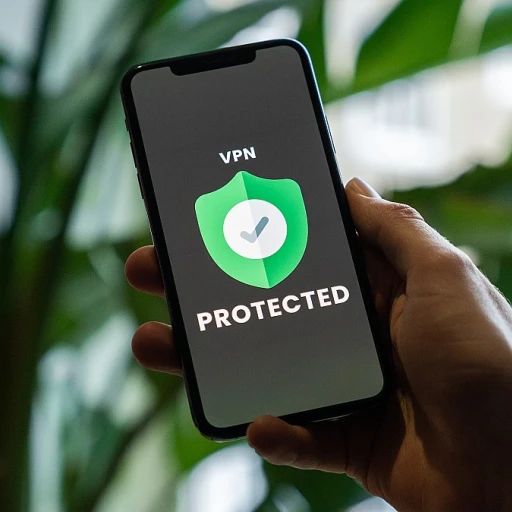Understanding Biometric Software Applications
Getting to Know Biometric Software
Biometric software applications have been making waves is how they uniquely identify and verify an individual's identity through physical or behavioral characteristics. Think of things like fingerprint scanning and facial recognition. It's all about simplifying and securing access through the use of technology that checks who you are, using things you are – like your retina, voice, or even your signature. This tech isn't a new kid on the block. In fact, law enforcement and security agencies have been using biometric systems for years now. But the push towards a digital era has broadened the use of these systems into more personal aspects of life. From unlocking your phone with your face, to a seamless identity verification process for your bank account, biometric engines are becoming part and parcel of our digital lives. The accuracy and speed of biometric solutions are continually advancing with software development, pushing organizations to adopt these identity verification systems as a means of control over access to data and services. More exciting is how these advancements also pay dividends in sectors like healthcare, as seen in the overview of software in healthcare. While biometric technology indeed offers more secure alternatives to traditional authentication methods, it's not just a free ride. Concerns around biometric data protection, consent, and identity theft have sparked debates, and we'll touch on these sensitive topics later. For now, clip in for the ride, as the future of biometric software applications seems poised to redefine our interaction with technology itself.Innovations Driving Biometric Software
Innovation Sparks in Biometric Software
Biometric technology is buzzing with fresh innovations that promise to redefine how we interact with the world. Tech companies are exploring artificial intelligence (AI) and machine learning to enhance biometric recognition apps. These advances mean faster and more accurate systems that can authenticate your identity in the blink of an eye. From facial to fingerprint recognition, these smart systems are becoming more adaptive, learning from patterns to improve accuracy and reliability. Whether you're accessing your phone or clocking in for work using time attendance systems, AI is at work, ensuring everything runs smoothly. New breakthroughs in cloud-based biometric software solutions offer scalability and flexibility, essential for businesses handling heavy data loads. These cloud infrastructures enable seamless integration and management, allowing for real-time updates and ensuring efficiency across the board. As the software development space pushes boundaries, expect more breakthroughs that change not only how secure our digital borders are but also how we manage access control in our everyday lives. In the context of security and new trends, it's important to view how emerging software trends are shaping the future of cybersecurity. Continual advancements in biometric systems are emphasizing stronger data encryption to protect identity verification processes and ensure individuals' biometric data remains private and secure. This is critical when managing biometric databases in both corporate and consumer sectors, where trust is paramount.Safety and Privacy in Balance
With great power comes the need for great responsibility, and this rings true with biometric authentication technology. The security and privacy of biometric data are at the forefront of technology debates. The potential for identity theft or misuse of biometric systems is a genuine concern. Companies are investing in encryption capabilities that shield biometric data from hackers while ensuring that it remains accurate and accessible for legitimate uses. There’s a delicate dance happening among tech giants to maintain trust with users. Implementing stringent measures for data protection while providing strong, user-friendly authentication experiences is the name of the game. As technology professionals work diligently, they are mindful of regulatory compliance and user consent, key aspects influencing how solutions are designed and deployed. Biometric software is not just about creating a secure environment; it's about ensuring users feel confident their data is in safe hands. The constant evolution of this technology continues to redefine boundaries between security and ease of access, always with a keen eye on retaining user trust.Biometrics in Healthcare: A Game Changer
The healthcare sector is increasingly relying on biometric software for identity verification, medication management, and patient record keeping. Biometric systems offer a robust solution for patient identification and access control, cutting down on errors often seen with manual record maintenance. Fingerprint and facial recognition play a significant role in patient identification—streamlining check-in processes and ensuring the right care for the right patient every time. These systems improve not only operational efficiency but also patient satisfaction. In emergency circumstances, quick identification through pre-registered biometrics can be life-saving. Furthermore, biometric solutions ensure medical records aren't just secure but also easily accessible to authorized personnel, providing a secure flow of information across health facilities. As this technology integrates further into healthcare systems, the potential to enhance service delivery and patient trust grows exponentially.Security and Privacy Concerns
Addressing Security and Privacy in Biometric Software
The growing reliance on biometric authentication has sparked a lively conversation about security and privacy. With biometric systems, our unique physical and behavioral traits, such as fingerprints and facial recognition data, transform into keys for unlocking personal and sensitive information. This raises questions about safeguarding such identity data. Imagine storing your most private data in a vault. You’d expect it to be secure, right? The same expectation applies to biometric databases. Developers and designers must prioritize creating robust security frameworks. More insights about this can be found in our latest post on prioritizing security in software development. However, a key concern remains: what if someone infiltrates these systems and gets unauthorized access to biometric databases? Unlike passwords, you can't simply change your fingerprints or face. This makes the loss of biometric data a considerable risk. Privacy, too, is no small matter. Users need assurance that their biometric data won't end up in the wrong hands. Biometric software developers are continuously working on encryption techniques and secure storage solutions to guarantee this. Yet, privacy advocacy groups caution that more public control and transparency are needed to address these concerns adequately. Biometric technology's wider use – from simple items like smartphones to complex law enforcement systems – shows its efficiency but also highlights vulnerabilities. We are witnessing an era where technology stands at the precipice of sublime advances and significant scrutiny. Balancing utility with safety is the responsible direction forward, ensuring biometric identification and authentication remain a force for good without compromising individual security.Biometric Software in Healthcare
Biometric Software Puts Healthcare in the Fast Lane
Biometric software isn't just about security; it's also making waves in healthcare by offering secure and efficient ways to manage patient identification and medical records. In medical settings, quick and accurate patient identification is more than just a convenience—it can be lifesaving. Picture this: A busy emergency room where every second counts. Traditional methods for retrieving a patient's medical history can take precious time, but with biometric systems like fingerprint and facial recognition, access control to critical patient data can be seamless. This technology ensures that from the moment a patient is admitted, their medical history is instantly accessible, allowing healthcare providers to make informed decisions quickly. In fact, biometric technology is being leveraged to improve the quality of care. By using facial or fingerprint recognition, healthcare providers can ensure that treatments are given to the right patient, reducing mishaps significantly. This kind of precision not only enhances safety but also boosts efficiency, creating a streamlined experience for both patients and healthcare professionals. Moreover, these biometric applications are about more than streamlining—it’s also about protecting sensitive information. Medical data requires the utmost care when it comes to security and privacy. With robust biometric authentication, hospitals and clinics are better positioned to guard patient data, meeting stringent compliance requirements without breaking a sweat. But let's not forget about the logistics. For healthcare facilities, implementing biometric systems means less paperwork and more focus on patient care. Time attendance systems powered by biometric identification can reduce administrative tasks, allowing medical staff to concentrate on what they do best—providing care. The path forward for biometric software in healthcare promises a future where identity verification is not just faster, but more accurate and secure. As these systems continue to evolve, expect to see an industry increasingly relying on biometric solutions to enhance patient outcomes. The integration of biometric software in healthcare settings shows significant promise, pointing to a future where medical errors are minimized, security is skin-deep, and patient care is optimized. So, buckle up; healthcare is racing towards a future where biometric technology plays a key role.The Role of Biometric Software in Financial Services
Biometrics Transforming Financial Transactions
In today's fast-paced financial world, security and convenience are top priorities. Biometric software is stepping up as a game-changer in this sector, offering a fresh approach to authentication and identity verification. From facial recognition to fingerprint scanning, these technologies are redefining how we access and control our financial data.
Enhanced Security and Fraud Prevention
One of the biggest advantages of biometric systems in finance is their ability to provide secure access control. Traditional passwords and PINs are vulnerable to theft and hacking, but biometrics offer a more secure alternative. By using unique biological traits, such as fingerprints or facial features, biometric authentication significantly reduces the risk of fraud.
For instance, banks and financial institutions are increasingly adopting biometric solutions to combat identity theft. By incorporating biometric identification into their systems, they can ensure that only authorized individuals gain access to sensitive information, thereby enhancing overall security.
Streamlining Customer Experience
Biometric technology not only boosts security but also improves the customer experience. Imagine a world where you no longer need to remember multiple passwords or carry physical cards. With biometric software, customers can enjoy seamless transactions with just a touch or a glance.
For example, some banks have introduced facial recognition software for mobile banking apps, allowing users to log in and authorize transactions with ease. This not only saves time but also adds an extra layer of security, as biometric data is much harder to replicate than traditional authentication methods.
Challenges and Considerations
While the benefits are clear, the adoption of biometric systems in finance is not without challenges. Privacy concerns and data security are at the forefront of these discussions. Financial institutions must ensure that biometric data is stored securely and used responsibly to maintain customer trust.
Moreover, there are ongoing debates about the ethical implications of using biometrics for financial services. It's crucial for companies to strike a balance between innovation and privacy, ensuring that biometric technology is implemented in a way that respects individual rights and freedoms.
As we continue to explore the potential of biometric software applications, it's clear that their role in financial services is only set to grow. With the right approach, these technologies can offer a secure, convenient, and efficient way to manage our finances, paving the way for a safer and more streamlined future.












